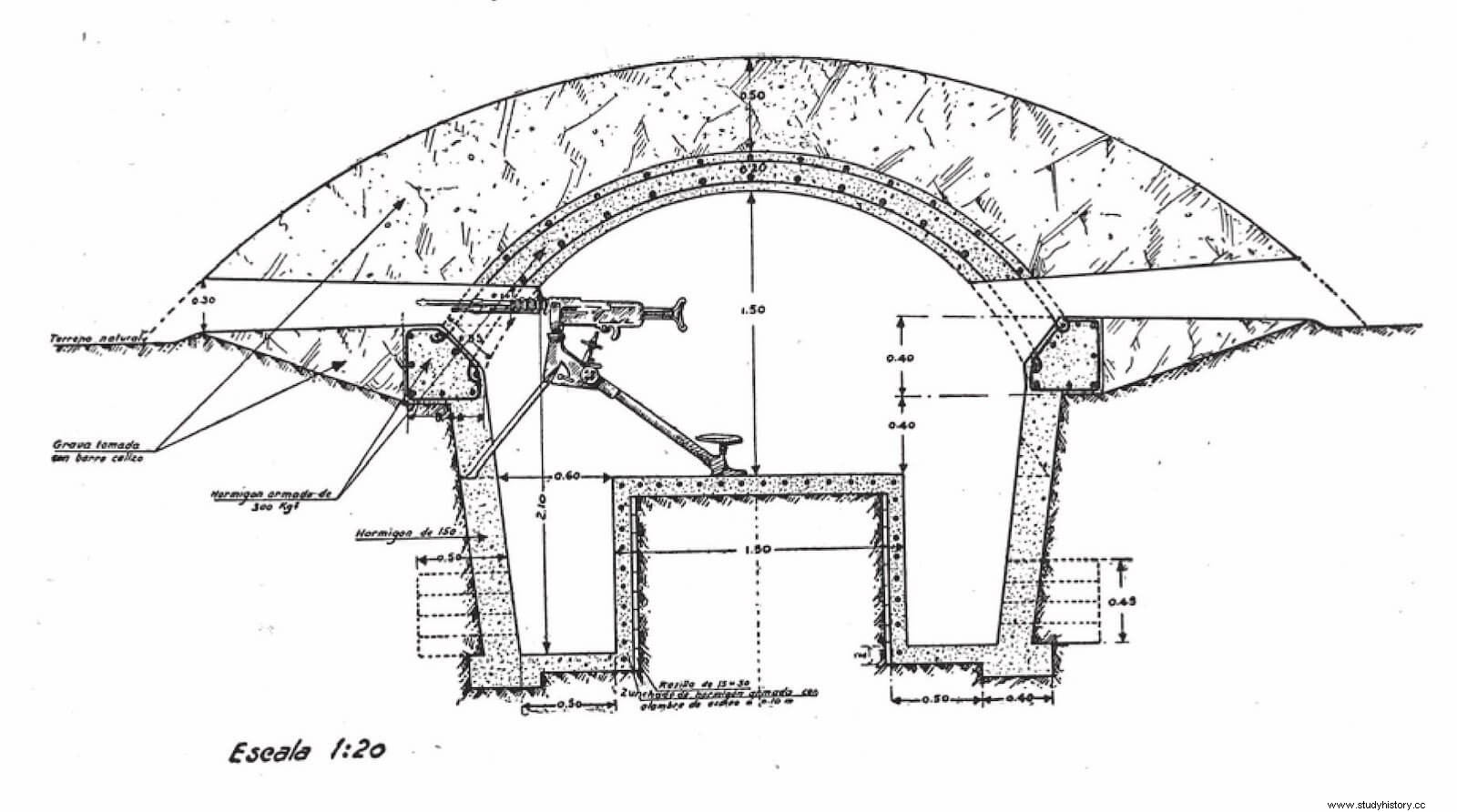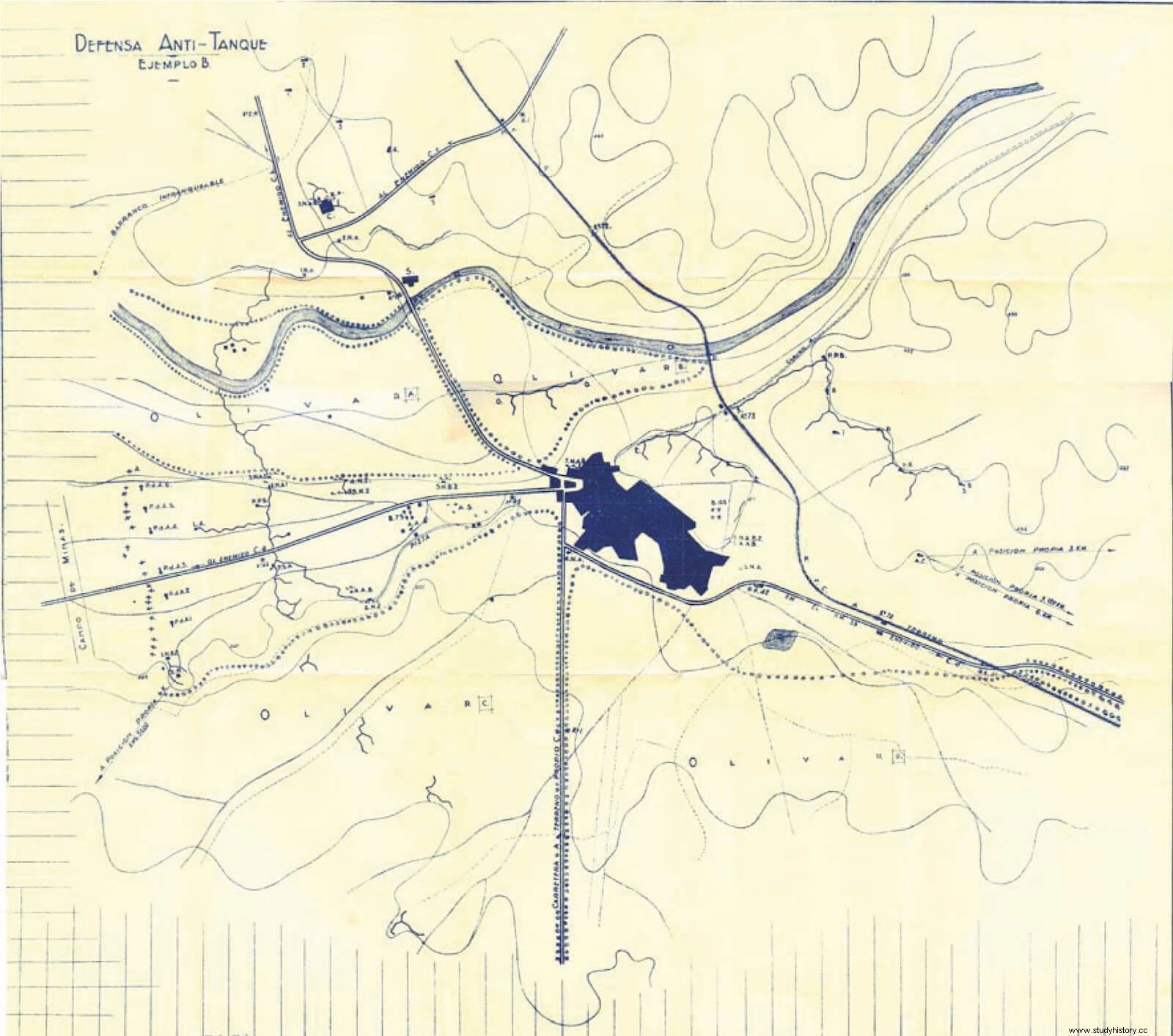
We can affirm that speaking of the War Spanish civil and not citing Belchite is impossible . By this name is known the military operation that the Government of the Republic planned to take Zaragoza in August 1937, an operation that failed in its initial objective, Zaragoza, would go down in history with the name of the battle of Belchite, both for being the population in which they carried out the most lasting combats, as well as for their extreme characteristics, reaching the behavior of attackers and defenders the qualification of true heroes for the value squandered there in its highest degree; because if the defenders did not surrender any position and defended them to the last drop of blood, the attackers had to take these positions by assault, spilling theirs in abundance to achieve it. For all these reasons, it reached the level of myth, and the participation of the International Brigades also contributed to this in large part, a circumstance that led to a great diffusion at the international level, enlarging it almost disproportionately.
From the first dates of the start of the Civil War, Belchite will be on the front line, in what is known as the Sur-Ebro sector. During the thirteen months that elapsed until the famous battle, various combats took place that did not reach great notoriety, although some of them manifested great virulence, such as the taking of Lobo by the Republicans in August 1936, and the combats of the mists; deserves a special mention the taking by the republicans of La Serna , 1 at the beginning of December 1936, and the reconquest of it by the Francoists in whose operation the famous captain of the rebel army, Santapau, would obtain a promotion based on merit. In the combats of that night of intense cold and rain in the form of terrible matacabra, many soldiers of both contenders would lose their lives. Among them, that of the republican captains Marchirant and Jubert stand out, and that of Carmen Crespo – a militiawoman known as La Francesita, sentimental companion of the charismatic captain Jubert who was in charge of the Government troops in the Lécera-Belchite sector –, since As a result of the death of the second, the republican formation known as Columna Ortiz was renamed Jubert Division.
Something that is most surprising about the battle of Belchite is that despite being so famous and having been written about so much, no one has studied it in depth , neither from the university world nor from the military. Almost all authors when they write about it limit themselves to making more or less extensive articles, but in reality they contribute little or nothing new about the battle, they are what is popularly known as "rehashes" since they are limited to using the material published by others previously. In honor of the truth, it must be said that some add slight details of their brief investigation, although in view of their publications they have searched the archives little and surely almost none have visited, much less walked, the land.
Even Martínez Bande, in his book The great offensive on Zaragoza , in which he dedicates more than half of his pages to this battle, makes clear his lack of knowledge about the Belchitan defensive constructions due to the few references he provides about them.
Belchite's defensive belt
After many years of research on this battle, I had not obtained solid information on the Belchitan defensive belt , 2 although I did reach a high degree of familiarity with it. And, if "every effort is rewarded", it is an example of this to have been able to unequivocally identify that the content of the book entitled Anti-tank defense , 3 it refers entirely to the defensive system built in the town during the Civil War by the 3rd Company of Sapper Miners, the Barbis, a military manual authored by the captain of that company at the time, Mr. Roque Adrada Fernández. This discovery is without a doubt one of the most important that I have achieved on the Civil War in Belchite and I consider it a reward for perseverance, completed with the reward of sharing it with the whole world.
One wonders why no one cites that work when writing about the battle of Belchite – except for my friend, the researcher Jaime Latas, who in his article on the Barbis mentions it at refer to it as another publication by that author, not suspecting the value of its content–.

So no one was ever able to identify that all the content of the work refers to Belchite, and thus Anti-tank defense It was for years and years on the shelves of military and civil libraries, going unnoticed by thousands of researchers of all kinds. Yes, no less than eighty years, which are those that have elapsed since its publication in 1937 until this discovery.
In the prologue, its author makes an exposition of his claims by writing:“The need to establish an anti-tank defense as quickly as possible [...] on how to defend against these combat devices [...]” and, step by step, the manual describes a town located on the front line, providing all the details of the orography and communication routes, and details how to provide it with defense against those modern war machines that were tanks.
Its small size is no obstacle to providing the theory of offensive and defensive combat techniques, using tanks and all kinds of weapons , including aviation, not excluding infantry. With details of technical aspects of location, masking, resistance of materials, construction typologies (shooter's pits, hedgehogs, moats, active defensive post, embankments, armored nest and for anti-tank guns and for machine guns, settlement of anti-aircraft pieces and 7.5 cm, trenches, floods, barbed wire, barriers and other types of works, also devoting a small chapter to mines, providing in the chapter five tips on anti-tank defense, both for the infantry troop and for their officers.
In it, a complete defensive system is developed in a hypothetical sector in detail that corresponds to Belchite, although he never mentions it, with detailed details of each element to be built and its mission. It also contains the plans, with bounded measurements, of the bunkers and positions that said unit built in Belchite.
He talks in detail about mines, from incendiary bottles to automatic mines, passing through handmade explosive devices, and providing valuable information on the "explosive devices used by the reds".
Take the opportunity to announce the monographs he is preparing: Chemical warfare. The protection; explosives; Campaign Fortification and the one that without a doubt would have been a work of great interest for scholars of this period of our history, which will be entitled:My company of sappers (the national uprising. –Acts and works. – Teachings of war) . Without forgetting to leave us a copy of the very curious decalogue of honor of the Barbis and some blank pages that allow future students who use that manual to take notes.
At the end it contains an appendix of fold-out pages on “special weapons and tank types” in some technical data tables on various types of infantry and anti-tank guns; heavy-caliber machine guns, and other special weapons and battle tanks. In another fold-out sheet, he exposes a whole series of practical drawings on explosive mines and their installation in all kinds of communication routes and in minefields.

The manual ends with a folding map 45 by 51cm which reflects in detail everything that has been described in the book. That plane is what I have described as the Invisible Plane. This faculty of invisibility is achieved by the mere fact of presenting it turned on itself laterally 180º or, what is the same, in the opposite direction to that in reality its cardinal points have. This small misleading maneuver is a sign of the astuteness of its author, who over time has proved him right in his belief that in general the public is most of the time incapable of recognizing what is in front of their eyes. eyes, and –even at the risk of repeating myself– it has been so; for eighty years no one was able to discover it. And do you know why? Well, because many people wrote or write about that mythical battle of Belchite without having studied it in depth enough.
Notes
1 Sierra located south of the Pueyo sanctuary and about 3 km from Belchite.
2 I do not consider it necessary to reference all works that partially cite Belchite's defensive system.
3 In a monographic way, the entire defensive system built in Belchite is detailed, although said population is never mentioned.
